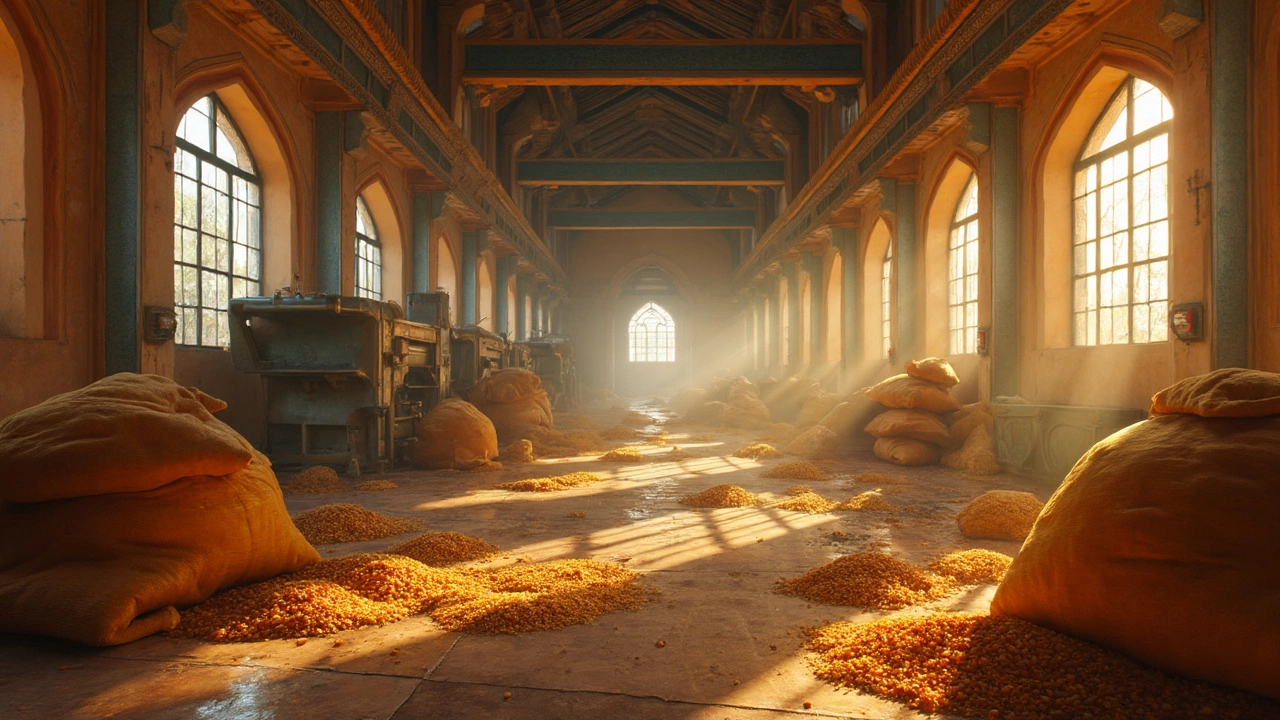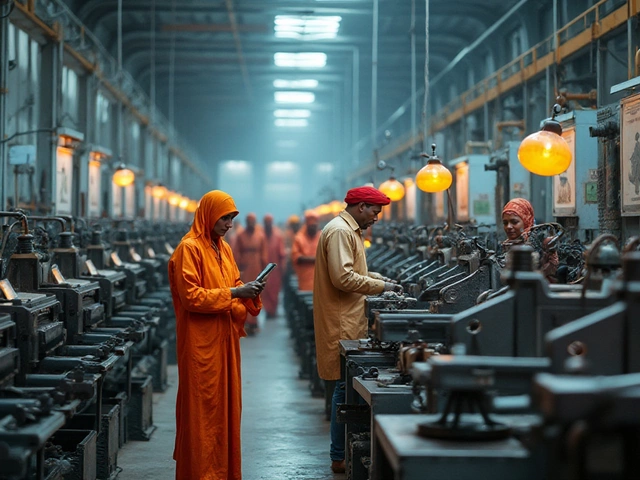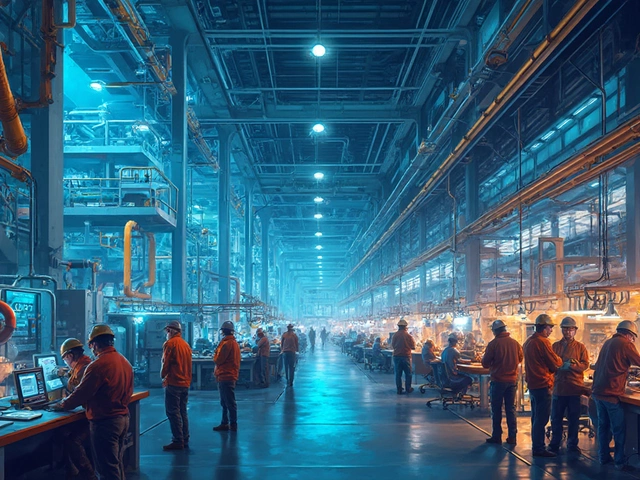Have you ever thought about what happens between raw ingredients and the tasty stuff on your plate? That's where food processing units come in. These nifty setups turn raw foods into what you're used to seeing in stores and restaurants.
Imagine you're running a small bakery. You can't just grind your own flour or do everything by hand if you're serving hundreds of customers a day, right? You'd need machines to handle things like mixing, grinding, and packaging. That's essentially what these units do: they make big production faster and more efficient.
Food processing units are like the backstage crew in a play—they might not be in the spotlight, but they’re crucial to the final performance. From grinding grain into flour to bottling the ketchup you love, these machines handle it all. They’re not just about speed, though; they help keep things safe and consistent. So next time you're enjoying a snack, remember there's a whole process behind making it just right!
- What is a Food Processing Unit?
- Types of Food Processing Equipment
- How Food Processing Units Impact Quality
- Efficiency and Cost-Effectiveness
- Choosing the Right Food Processing Unit
What is a Food Processing Unit?
When you think about a food processing unit, imagine it as the heart of the food production action. It's where raw ingredients get transformed into ready-to-eat products. We're talking about a vast range of setups, from a small machine in a bakery kneading dough to a massive industrial plant churning out tons of your favorite cereal.
These units come equipped with various machinery designed for specific tasks. For instance, you might have a blender for mixing, a conveyor belt for moving products along, and even advanced packaging systems. Each machine plays its part in ensuring the food is handled, processed, and packed precisely.
Curious about what kind of equipment gets used? Here's a quick list:
- Mixers and Grinders: For mixing ingredients like dough or grinding grains into flour.
- Ovens and Dryers: To bake or dry products like biscuits and pasta.
- Sorting and Cleaning Machines: To ensure raw materials are clean and contaminants-free.
- Packaging Equipment: To efficiently pack products in bags or boxes.
Beyond just making food, these units help in maintaining quality standards, ensuring that every batch produced is safe and consistent. Statistics show most large-scale food industries rely on this machinery to meet safety regulations while keeping production efficient and cost-effective. Whether they’re used for making sauces, baking bread, or canning vegetables, food processing units are the backbone of food manufacturing.
Types of Food Processing Equipment
When diving into the realm of food processing units, it's like exploring a toolbox designed specifically for eating. Different tasks need different tools, and the world of food processing is no exception. Each type of equipment plays a vital role in making sure things run smoothly in the production line.
First up, we've got mixers and blenders. These are the workhorses for combining ingredients, whether you’re blending dough or mixing batter. Think of them like the giant versions of those mixers you find in a home kitchen - but on a scale to feed armies.
Next, there's the grinders and mills. These are crucial for reducing the size of ingredients, like turning grains into flour. In a nutshell, they're all about making things smaller and manageable.
- Extruders: These are heroes in creating fun shapes from dough. Remember those twisted pasta shapes? Extruders are behind those culinary wonders.
- Homogenizers: Essential in dairy production, they ensure that milk and cream are perfectly blended, giving the consistent texture folks expect.
- Packaging machines: Last stop before products hit the shelves. These machines wrap and seal, keeping things fresh and hygienic.
On the stats side, did you know that the global market for food processing equipment was valued at over $62 billion in 2024? This speaks volumes about how essential and widespread this industry has become.
The beauty of these machines is they don’t just speed things up; they enhance consistency and safety, ensuring every bite meets quality standards. Whether you dream of running a small cookie factory or you're just curious about how your food gets to you, knowing what these machines do opens a window into the heart of modern food production.

How Food Processing Units Impact Quality
Let's dive into how food processing units play a massive role in maintaining the quality of our food. These machines aren't just about speed. They're here to make sure everything you eat is safe and up to standards.
First off, consistency is key. Imagine making a thousand jars of jam—all needing to taste the exact same. That's a task suited for a food processing unit. These machines can mix, heat, or cool ingredients so they turn out just right every time, no matter the scale of production.
Another big deal is cleanliness. Processing units have built-in systems to handle sanitation, which is crucial for safety. No one wants bacteria sneaking into their food. By maintaining strict hygiene protocols, these units lower the risk of contamination.
As one expert mentioned,
"The right equipment can elevate food safety and quality to levels that manual methods simply can't achieve." - Dr. Emma Clarkson, Food Safety Specialist.
Moreover, food processing units help retain nutrients during production. Some equipment is specially designed to minimize nutrient loss, keeping your food healthy and delicious.
These units also streamline the packaging process, ensuring everything is sealed properly and labelled precisely. Imagine being able to scan a barcode that tells you everything about your food: origin, nutritional info, and even how fresh it is.
In short, food processing units make food production efficient while keeping safety and quality a top priority. That's something worth munching over!
Efficiency and Cost-Effectiveness
When you're thinking about scaling up your food production, two things are bound to cross your mind: cost and efficiency. That's where a food processing unit steps in like a game-changer. Imagine trying to make thousands of cookies by hand—it's just not practical. But with the right equipment, not only can you save cash, but you can pump out those cookies way faster.
Here's the scoop: modern food processing units are designed to reduce waste and optimize output. Factories have machines that can peel, chop, dice, and more in minutes, stuff you'd take hours to do by hand. Take a potato chip factory, for example; machines there sort, wash, slice, fry, and even bag the chips in one continuous flow. It’s seamless!
Food processing equipment also cuts down on labor costs. With machines doing the heavy lifting, you need fewer hands on deck. This means you can focus your workforce on more important tasks, like quality control or product development, which ultimately boosts the business.
Investing in processing units also means consistent quality—every single product is identical, from taste to texture. Consistency wins customer trust, and trust equals repeat business. Plus, with automation, errors that can lead to costly recalls are minimized.
Now, if you're wondering about affordability, consider that the initial investment can be hefty. But running a business means thinking long-term. The cost of keeping old-school methods will add up quickly with labor and inefficiencies. With processing equipment, many businesses see their upkeep and operation costs shrink, providing significant savings over time.
To sum it up, while the up-front cost can seem daunting, the benefits of efficiency, reduced waste, and labor savings make food processing units a smart move for anyone serious about scaling their food business. It's all about working smarter, not harder!

Choosing the Right Food Processing Unit
Picking the right food processing unit for your business can seem like a challenge, but it's a key decision that can make or break your operation. Your choice should be based on a couple of important factors, like the type of food you're producing, your production goals, and, yes, even your budget.
First off, think about the scale of your production. Are you catering to a small local market or are you trying to reach the masses? If you're looking at large-scale production, you'll need units that are bigger, faster, and capable of handling bulk processes without breaking a sweat. Whereas, for a more niche market, something smaller and perhaps more customizable might do the trick.
Next, consider the type of processing equipment specifically suited for your product. Different foods need different treatment. For example, veggies and fruits need something different than grains or meats. You don’t want to use a grinder meant for meat on your apples, right? Be sure to match the machine with the product.
Quality and safety are big deals. Look for units that meet industry certifications and standards to guarantee you're not only making top-notch products but also keeping them safe to consume. In some cases, you might find it useful to look at food industry reviews or even ask other pros in the field.
Then there's the question of cost. Think beyond the sticker price. Consider operating and maintenance costs too, as they can add up. Sometimes, spending a bit more upfront for better efficiency and durability pays off in the long run.
| Factor | Consideration |
|---|---|
| Scale | Small vs. Large Production |
| Product Type | Specific Equipment Needs |
| Quality & Safety | Industry Certifications |
| Cost | Initial vs. Long-term |
Lastly, don't shy away from tech support and customer service. The best equipment might not mean much if you can’t get help when something goes off the rails.






